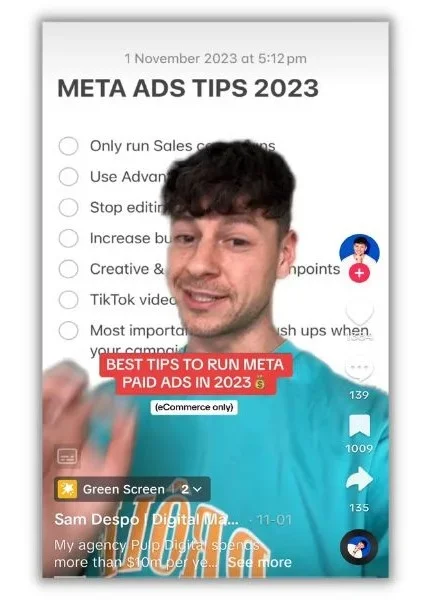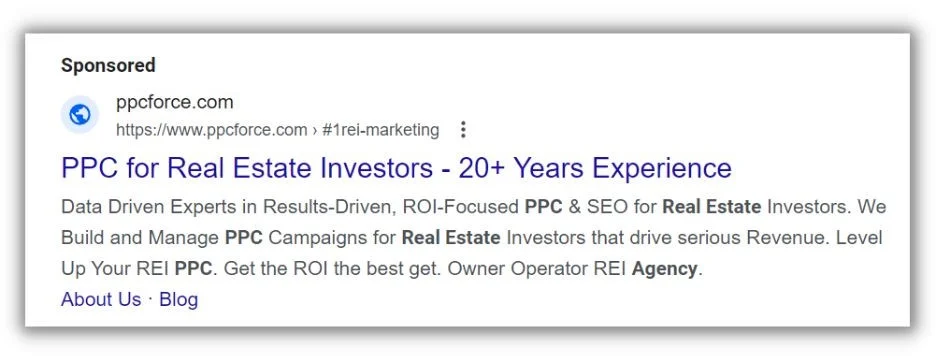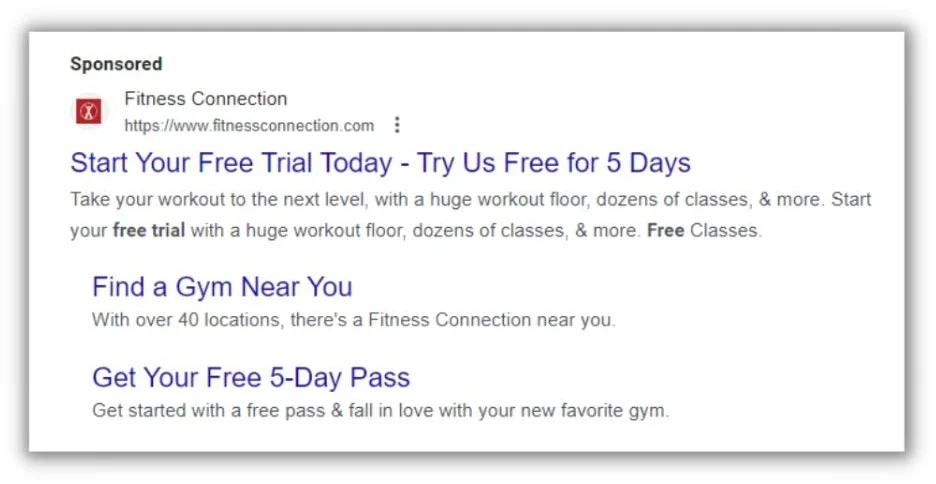You can’t grow a digital marketing agency without acquiring new clients. And while you may be doing all the things to promote your shop, there’s one simple-but-powerful way to scale growth without spending a dime: verticalization.
Verticalization is simply the process of making your agency industry-specific. So instead of serving ecommerce, healthcare, and home services clients, you pick one and go all in on it.
Let’s take a look at why narrowing your market focus is a sneaky smart way to grow your agency faster. And more importantly, let’s see the plan to do it efficiently and effectively.
🕵️ 300 of your agency competitors told us how they choose services, set pricing, and think about challenges. Download the State of the Digital Marketing Agency report to learn what they had to say.
How does verticalization help your agency grow?
In sports, athletes specialize in skills that help them become the best at a given event. A sprinter that spends time training for the shot put won’t win many races.
Likewise, a marketing agency that becomes the expert in a single vertical will outperform an unfocused generalist. With that success comes the reputation as the go-to agency for other businesses in the same vertical, creating a flywheel of growth.
Get more relevant referrals
Why would a SaaS prospect care about the results you’ve driven for a brick-and-mortar client? They really don’t.
When you work exclusively in one market, your reviews and testimonials come from businesses very like the ones you’re trying to sign. Your prospects see feedback from people who have the same challenges they do and feel comfortable that you can solve them.

Verticalized customer testimonials are perfect decoration for your website and landing pages.
Increase lifetime value
The keys to increasing client lifetime value are offering more services and keeping clients around longer.
As you gain insider knowledge of a target industry, you’ll be able to apply it to other services. That gives you an opportunity to grow through cross-sell and add-ons.
Say you run PPC campaigns for real estate professionals. You’ll gain a ton of knowledge about real estate marketing that’s applicable to organic social media or content creation.
Those additional services will also make your agency more important to each client, which means less churn. It’s a lot easier to grow when you’re not replacing lost clients with new ones.
Build trust through expertise
It’s a lot easier to become an expert in all things PPC for ecommerce clients than to do the same for multiple verticals. That means you’ll know exactly how to describe the problems and solutions each of your prospects has in terms they understand.

Show your expertise by sharing knowledge on social media platforms.
Plus, you’ll confidently know how to solve each prospect’s challenges. Your marketing proposals will become so much more convincing.
Scale more efficiently
If you’re managing and measuring PPC spend for clients in several industries, you’re going to be implementing widely different strategies for each one. A SaaS client needs to nurture prospects through a long sales cycle, where a retail store needs you to ramp up ads in Q4.
Representing businesses from only one vertical lets you replicate account structures across clients. Onboarding new clients is more efficient, and you deliver better results faster while reducing the overhead to do it.
Reduce your competition
There are a lot of multi-vertical agencies. There are considerably fewer agencies that only serve restaurant chains or home repair and maintenance businesses.

Your agency will stand out in the crowd when you target a specific vertical.
Plus, now that you’re the go-to agency in your industry, you can charge a premium for your services over your competitors..
How to verticalize your agency in seven steps
The good news is that verticalization isn’t a huge undertaking. The hardest part is committing—it’ll feel weird turning down clients outside of your niche.
Once you set your mind to it, just follow these seven steps and you’re on the way to the riches that come from niches.
1. Pick a vertical
This is the most difficult step for many agencies for two reasons. First, you’ll inevitably experience FOMO when opportunities in a different industry pop up. And second, this step requires a good bit of research.
Keyword research is your best friend here. Why? Because if people are searching for an agency in a specific vertical, there’s evidence of demand.
“Dental marketing agency” and “restaurant marketing agency,” for example, both get searched a couple hundred times a month in the US, which indicates substantial demand. “Dance school marketing agency,” on the other hand, doesn’t get searched much at all.
👋You can use our free keyword tool to learn which industries search the most for digital marketing agencies.
2. Study your industry
Got the industry you want to go after? Good. Now it’s time to study.
Winning the trust of advertisers in your target vertical requires you to answer several questions:
- What are the most common pain points?
- What are the most common obstacles to growth?
- What are these businesses trying to accomplish?
- Who are they trying to get in the door? How long is the average sales cycle?
To find your answers, follow Reddit threads, industry Slack groups, and influencers on X (FKA Twitter) and LinkedIn.
Empathy plays a huge role in the endeavor. Whenever you spend time learning about your chosen industry, try to imagine yourself in their shoes. That will help you market their business more effectively and make your pitches more effective.
3. Develop a strategy
This is where all the knowledge you’ve acquired pays off. Before you start pitching, you need to get the wheels turning on strategy. You’ve got to think in terms of the funnel.
For example, what do conversions look like in this industry?
Let’s say you’ve decided to target the local gym scene. Ask yourself: What do gym owners consider conversions? They probably include things like watching a Facebook video, making a phone call, signing up for a newsletter, downloading a guide, scheduling a consultation, doing a trial period, and purchasing a membership.

When you understand an industry’s sales funnel, you can tailor ads to move people through it.
Once you’ve determined those conversion actions, it’s time to figure out how you’re going to drive them. Get Facebook video views by targeting lookalike audiences based on gyms’ current customers. Drive content downloads by targeting the people who watched at least half of those videos. Use the contact information you get from those content downloads to offer free trial periods. You get the idea.
Notice how the strategy you build for customer #1 works for all of your clients? That’s how you scale quickly.
4. Find new prospects
Rubber, meet road. You’ve got a full-funnel marketing strategy built for a specific industry that you know inside and out. Now it’s time to get new clients.
Google searches are, again, a good place to start. Try entering industry specific keywords that match your ideal customer like “dentists near me” or “small retail businesses in Oregon.”
You can also search business directories like Yelp and others to find businesses that have good reviews and are more active online. Those are often easier to sell to since they value internet traffic.
5. Review their ads and pitch
Since you’re just starting out, you’ll probably have to do some cold outreach. Take the potential prospects you’ve found and evaluate their Google search results.
Are they running paid search ads? If so, are they doing a good job?
If the answer to both of those questions is a resounding no, give those places a call or send an email and let them know how you can help. You can include Google Ads industry benchmark costs for them to compare as another way to show your vertical expertise.
One word of caution. Be careful how you present this information. You don’t want to insult the people who may hire you.
6. Audit your work
You’ve signed a handful of clients in your new industry…congrats! But your path to verticalization isn’t complete.
The next step is to audit your work against the overall vertical for things like Quality Score, impression share, and wasted spend. You can use a tool like our Google Ads Grader to complete your audit.
Package the results and recommendations in a verticalized report and send it to your clients.
7. Find your next client
Your first successful clients are a fantastic source of social proof. Use it to gain new clients.
For starters, don’t be afraid to ask your clients for references and reviews. It may feel odd at first, but it’ll be familiar to most people (we all get asked for reviews all the time). Make sure to include the request on invoices, in emails, and have a link on your website so people can rate you on Google.
Use customer testimonials to write up case studies and plaster them all over your website. You can even add it to future client pitches. Any place where a little extra social proof will help win a new client.
To scale agency growth, go vertical
It seems counterintuitive to grow faster by narrowing your addressable market. But tripling your new-business close rate in one vertical is much better than failing to win new business in a bunch of them.
To put yourself on the path of growth through verticalization, remember these seven steps:
- Pick a vertical
- Study your industry
- Develop a strategy
- Find new prospects
- Review and pitch
- Audit your work
- Find your next client
Ready for more growth? Use these AI tools for marketing agencies to streamline processes and produce better client work faster.







